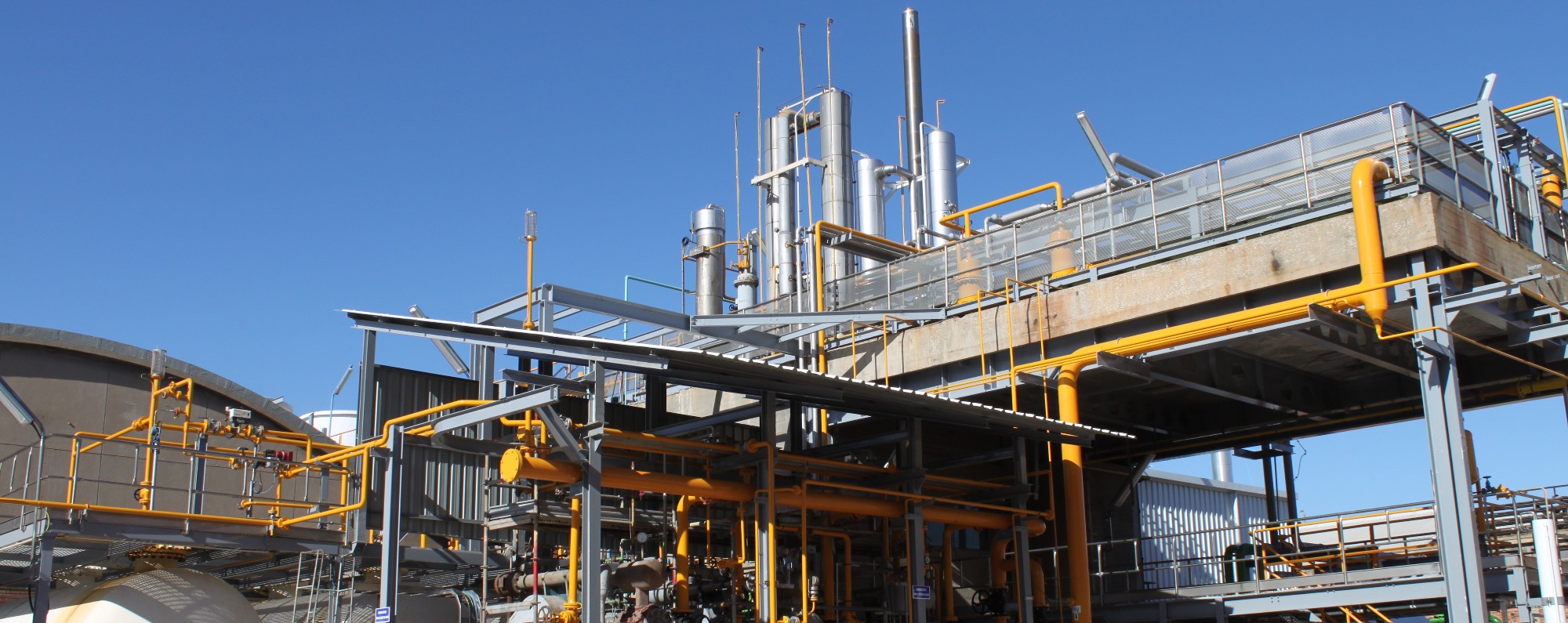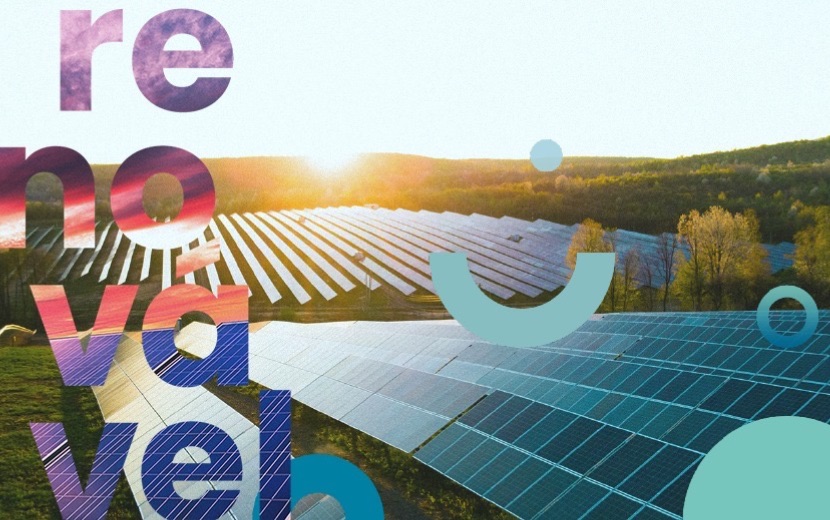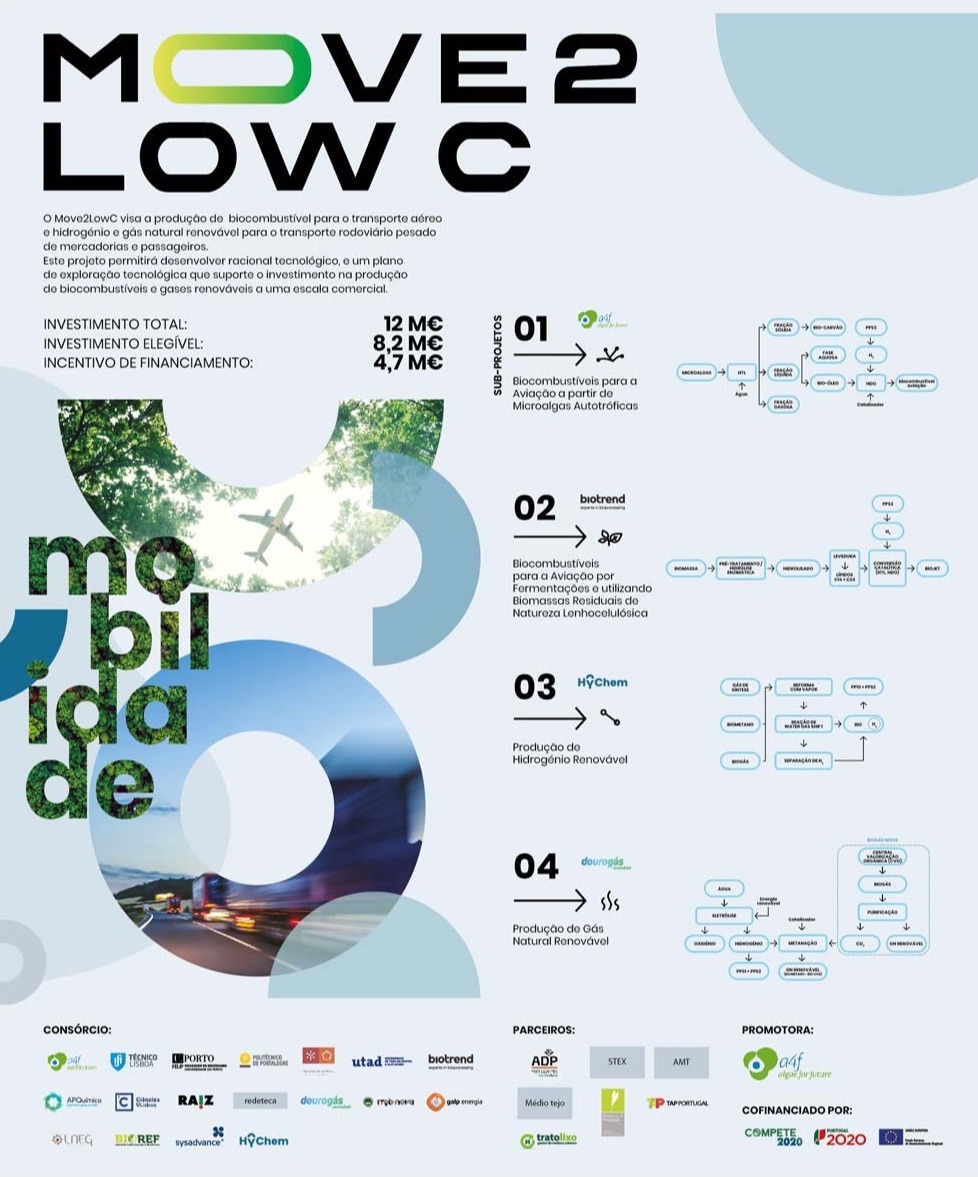HyChem plays a critical role in the strategic and innovative Move2LowC project, which aims to combat climate change and transform the economic model by creating alternatives in the area of sustainable mobility, not solely based on electric energy.
Move2LowC embodies the idea of producing biofuel for air transport, and hydrogen and biomethane for heavy road transport (freight and passengers). This will allow the development of a rational technological plan and an exploitation plan that supports investment in the production of biofuels and renewable gases on a commercial scale.
The project involves 22 partners, leading the chemical industry and the applied research in Portugal, and has a budget of 12.6 million euros.
The mobilization of these agents, from large organizations to innovative SMEs, including entities of the National Scientific System, focuses on an innovative agenda that aims to offer low-carbon mobility solutions (Move2LowC). The ultimate goal is to produce hydrogen from a renewable source, biogas.

The Move2LowC project aims to use new resources and new sources of raw materials [aquatic biomass (microalgae), residual forest biomass, and industrial effluents], to develop biomass conversion technologies into biofuels, reducing the impact and increasing sustainability of transportation.
This is achieved through the development of new renewable energy applications, particularly in cases where electric mobility has limitations, such as in heavy-duty freight and passenger transport, maritime transport, and aviation.

HyChem, along with its shareholder groups, aims to develop the concept of a 21st-century industry that is strongly committed to decarbonisation, and integrates and adapts production processes to the new energy paradigm.
This strategy includes the creation of a renewable energy community, which started with the installation of a 2 MW solar power plant and will continue to grow until it saturates the available rooftops in the industrial complex. This solar production capacity is expected to cover 20% of the energy needs of the community, which is why the idea of complementing these units with wind power is being considered.
With this complementarity, the community will be able to meet 50% of its energy needs. But in order for the Póvoa site to be carbon neutral, HyChem is investing in strengthening its green hydrogen production capacity and studying high-density hydrogen storage, in order to later maintain the community's operations even during periods with insufficient sun or wind through a gas to power system.

